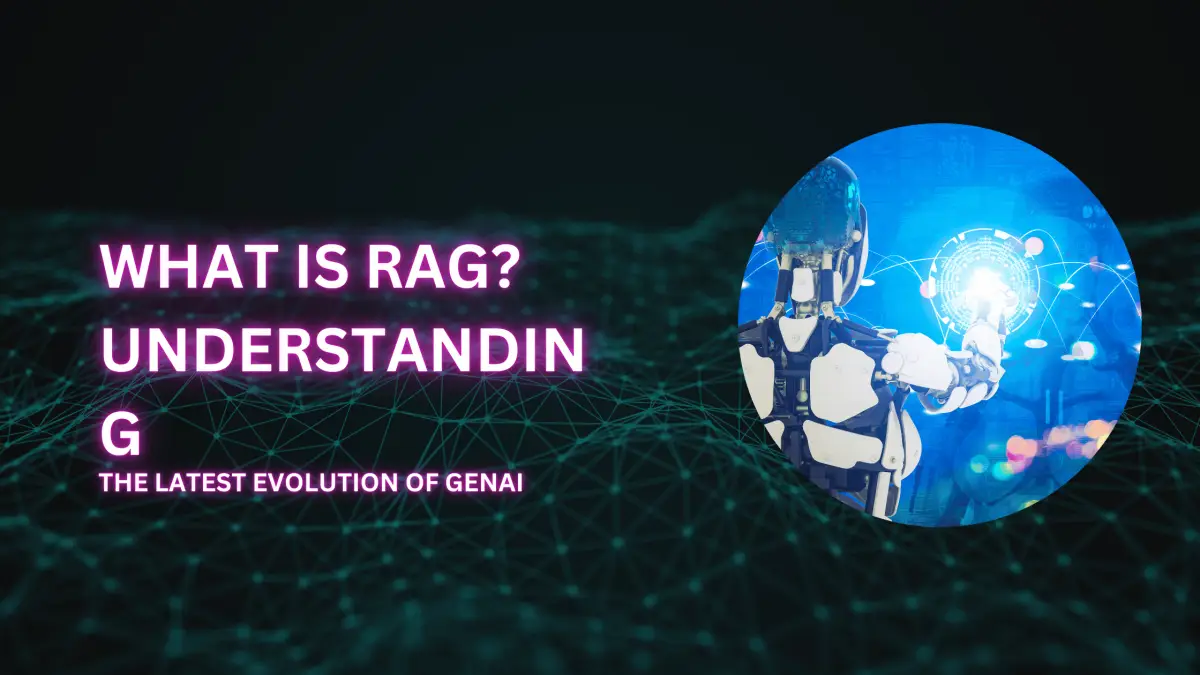What is Rag: Generative AI is changing the way we interact with technology. From chatbots that answer questions in natural language to intelligent assistants that summarise complex documents, the capabilities of large language models (LLMs) are growing rapidly. However, one challenge still stands in their way accuracy.
That’s where RAG, or Retrieval-Augmented Generation, comes in. This approach is shaping the next phase of AI adoption by combining the creative language skills of LLMs with the factual grounding of external data sources. In other words, it allows AI systems to speak confidently and stay correct.
At Miniml, we’ve seen how RAG can make AI systems far more reliable for businesses in sectors like healthcare, finance, retail, and education. Let’s explore what RAG is, how it works, and why it’s becoming such an important step in the evolution of Generative AI.
What is Retrieval-Augmented Generation?
RAG stands for Retrieval-Augmented Generation. It’s a method where an AI system retrieves relevant information from a database, knowledge base, or other external source before producing its final answer.
Instead of relying solely on what it learned during training, the AI fetches up-to-date, domain-specific content and uses it to shape a more accurate and context-aware response.
Think of it like a student answering an exam question. Instead of guessing from memory alone, they check a reliable reference book, then give their answer confident that it’s based on the latest facts.
How RAG Works: Step-by-Step
The process behind RAG is straightforward once you break it down. Here’s how it flows in a typical application:
- User Input
- The user asks a question or provides a prompt.
- Example: “What are the latest financial regulations for SMEs in the UK?”
- The user asks a question or provides a prompt.
- Retrieval
- The system searches connected data sources these could be internal company documents, online knowledge bases, or real-time APIs.
- It selects the most relevant pieces of information.
- The system searches connected data sources these could be internal company documents, online knowledge bases, or real-time APIs.
- Augmentation
- Retrieved documents are fed into the AI model as additional context alongside the user’s query.
- This helps the model ground its answer in verifiable facts.
- Retrieved documents are fed into the AI model as additional context alongside the user’s query.
- Generation
- The AI produces a final response, combining its language capabilities with the factual data retrieved.
- The AI produces a final response, combining its language capabilities with the factual data retrieved.
By using this approach, RAG makes answers not only sound natural but also stay rooted in reality.

RAG vs. Traditional LLMs
Before RAG, LLMs worked in a closed world whatever they didn’t learn during training, they simply didn’t know. This meant they could produce plausible-sounding but factually incorrect information, often called “hallucinations.”
With RAG:
- Responses are supported by actual documents or databases.
- Information is as current as the sources it pulls from.
- The AI can be adapted to specialised domains without retraining the whole model.
Without RAG:
- Knowledge is frozen at the time of model training.
- Greater risk of errors when answering niche or time-sensitive questions.
| Feature | Without RAG | With RAG |
| Data Freshness | Static | Real-time from sources |
| Accuracy | Prone to errors | Based on retrieved facts |
| Domain Adaptability | Requires retraining | Can plug into new datasets |
| Security Options | Limited | Can use private, secure data |
Key Benefits of RAG for Businesses
RAG isn’t just a technical improvement it directly impacts how companies use AI in real-world scenarios.
1. Greater Accuracy
By checking information against reliable sources, RAG significantly reduces factual errors in AI responses.
2. Real-Time Relevance
It can pull the latest data from internal and external sources, keeping responses up-to-date.
3. Industry-Specific Knowledge
RAG allows companies to connect AI to their own proprietary data, making outputs relevant to their unique operations.
4. Reduced Risk in Decision-Making
When decisions rely on accurate information such as in healthcare or finance RAG adds an extra layer of confidence.
Example Applications Across Industries:
- Healthcare – Patient support tools that reference the latest treatment guidelines.
- Finance – AI assistants that pull from current regulatory documents.
- Retail – Chatbots that access real-time inventory and product details.
- Education – Learning platforms that link to up-to-date academic resources.

Challenges and Considerations
Like any technology, RAG comes with its own set of challenges. Knowing these helps in planning a better implementation.
- Data Quality – If the sources contain errors, the AI will repeat them.
- Latency – The retrieval process can slightly increase response times.
- Security – Connecting to private datasets requires strong access controls.
- Infrastructure Costs – Large-scale retrieval systems need efficient hosting and indexing solutions.
Businesses should weigh these factors and choose a setup that balances speed, accuracy, and security.
Why RAG Matters in the Future of GenAI
The AI world is moving from static knowledge models to dynamic systems that interact with live data. RAG is central to that shift. It’s particularly important for companies dealing with fast-changing information like market prices, medical guidelines, or regulatory rules.
We’re also starting to see RAG combined with multi-modal AI, meaning it can retrieve not only text but also relevant images, videos, or audio clips. This opens the door to richer, more interactive AI tools for both customers and internal teams.
How Miniml Uses RAG in Client Solutions
At Miniml, we design RAG-powered systems tailored to each client’s needs. That means understanding your data sources, your industry requirements, and your performance goals before building the solution.
Our process typically includes:
- Mapping the information flow and identifying the best retrieval sources.
- Setting up secure pipelines to connect these sources to the AI system.
- Fine-tuning the generation process to reflect your company’s communication style.
- Testing the system for speed, accuracy, and compliance before full deployment.
We’ve implemented RAG-based solutions for:
- Healthcare providers needing secure patient information access.
- Financial firms requiring accurate compliance reporting tools.
- Retailers looking for AI-driven product recommendation systems.
By combining deep technical expertise with industry knowledge, we create AI tools that actually work in the real world.

Conclusion
What is Rag: RAG is more than just another AI trend it’s a practical step forward in making AI systems more accurate, reliable, and useful for businesses. By blending retrieval with generation, it helps bridge the gap between machine intelligence and real-world facts.
As companies adopt more AI-driven processes, RAG will play a major role in ensuring these systems stay relevant and trustworthy.
If your business is considering a Generative AI solution, Miniml can help design and implement a RAG-based approach tailored to your needs.








